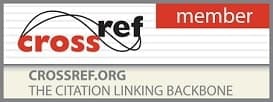- Printed Journal
- Indexed Journal
- Refereed Journal
- Peer Reviewed Journal
P-ISSN: 2394-1685 | E-ISSN: 2394-1693 | CODEN: IJPEJB
Impact Factor (RJIF): 5.38
2024, Vol. 11, Issue 2, Part D
Effectiveness of motor control exercise and isometric neck exercise on nonspecific neck pain
Author(s): Amrutha S, KS Sharad, R Rejeesh Kumar and Arjun R Krishnan
Abstract:
Background and Objectives: Neck pain is defined as pain in the neck with or without pain referred into one or both upper limb. Non-specific Neck Pain refers to neck pain (with or without radiation) whose underlying cause cannot be traced to any specific systemic disease The motor control exercises are the therapeutic approach which mainly focuses on motor control, activation of deep cervical muscles, and aims to retrain the optimal control and co-ordination of the cervical muscles. Isometric exercise is used as a special technique in proprioceptive neuromuscular facilitation to improve the endurance and strengthens the muscles in a weak portion of the range. Goal of this study is to find out the effectiveness of motor control exercise and isometric neck exercise in reducing pain and disability when used in combination
Methods: This was randomized controlled trial conducted among patients with non specific neck pain. 30 subjects participated in the study in which 15 were in experimental group and 15 were in the control group. Prior to the study a consent was signed and the procedure was explained to the subjects. Duration of the intervention was 3 weeks, and outcome measure used to rate the pain, disability and fear are visual analogue scale, neck disability index and fear avoidance beliefs questionnaire scale.
Results: The study result suggest that there is a significant improvement in the scores on neck disability index and visual analogue scale and fear avoidance beliefs questionnaire for the experimental group post intervention. By comparing the pre-test and post-test neck disability scores mean change is 28.93is the difference between pre-test and post test (37.07-8.13). In VAS mean change is 4.20 is the difference between pre and post test (6.47-2.27). In FABQ mean change is 26.20is the difference between pre and post test (39.47-13.27).
Conclusion: Statistically it is observed that, the isometric neck exercise and motor control exercise leads
to a significant improvement in strength, decrease neck pain, decreased fear of the subjects under study. Based on the performed study, it can be concluded that isometric neck exercise and motor control exercise can be performed as a daily routine to improve strength and to decrease pain on neck.
Pages: 228-238 | 100 Views 28 Downloads
Download Full Article: Click Here

How to cite this article:
Amrutha S, KS Sharad, R Rejeesh Kumar, Arjun R Krishnan. Effectiveness of motor control exercise and isometric neck exercise on nonspecific neck pain . Int J Phys Educ Sports Health 2024;11(2):228-238.








 Research Journals
Research Journals